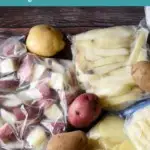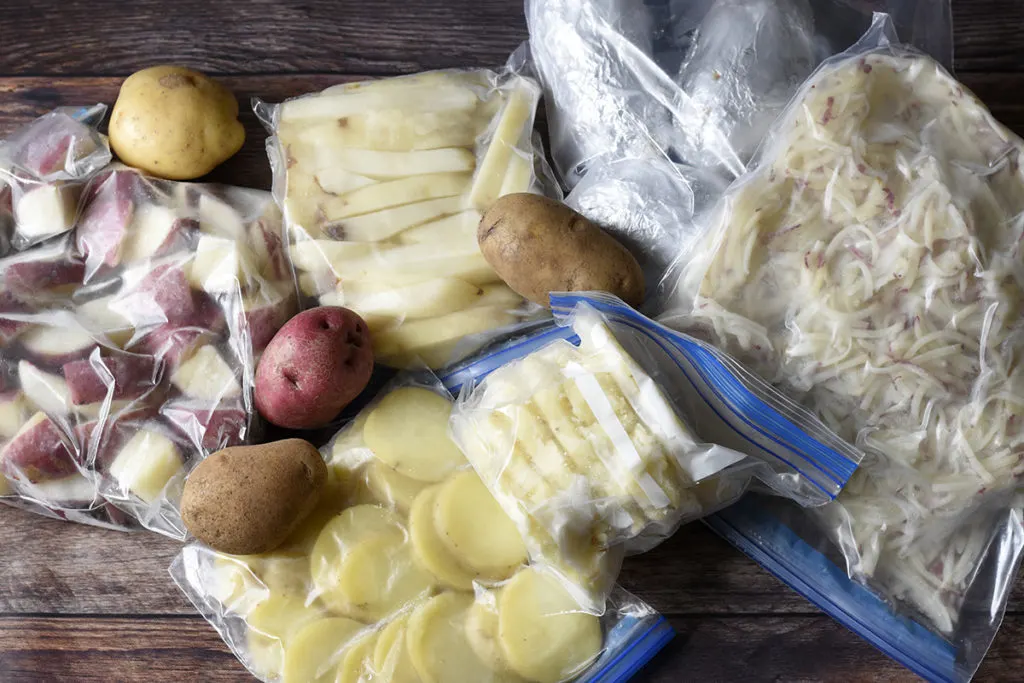
Growing potatoes is like digging for buried treasure. Only, instead of finding gold doubloons, you find future mashed potatoes and french fries on this treasure hunt.
Related Reading: 15 Potato Growing Tips For Huge Harvests
Unless you grow Yukon Gold potatoes, then technically you would be finding ‘gold’, right?
In any case, there’s always that element of excitement when you’re digging up potatoes. Will 20 little potatoes be waiting for you? Will you be unearthing giant, football-sized tubers? What’s hiding there under the dirt?
Of course, if you’re really smart, you’ll grow your potatoes in a 5-gallon bucket. That way, all you have to do is dump the bucket out when the plants have died back – no risk of piercing one of your precious treasures with a shovel and having it spoil.
And if it’s a big yield? Oh, man, let the celebration begin. But once you’re done dancing around your pile of unwashed spuds like a hobbit before elevensies, you realize you have a problem.

“Where the heck am I going to put all of these?”
In your freezer, of course.
Freezing potatoes is an excellent way to preserve a large yield (or a great sale at the grocery store). Some potatoes freeze better than others, though; red potatoes, golden potatoes like Yukon Gold, and Russets all hold up well in the freezer.
But Tracey, I tried to freeze potatoes that one time before, and it did not go well.
Ah, but this time, I’ve got you covered.
You Can’t Freeze Raw Potatoes
The heading says it all. Nope. Don’t even try it. You’ll regret it.
If you’ve frozen potatoes raw before, you know the unappealing consequences when they thaw – black potatoes.
The reason this happens is two-fold. When we freeze vegetables without blanching them first, the natural enzymes in our veggies are still active. So that lovely batch of frozen, raw potatoes is still slowly ripening and slowly breaking down in your freezer.
Once they thaw, another process kicks in – oxidation. The oxidation causes the cells of the potatoes to turn black. Mmmm, who doesn’t want to eat black potatoes for dinner?
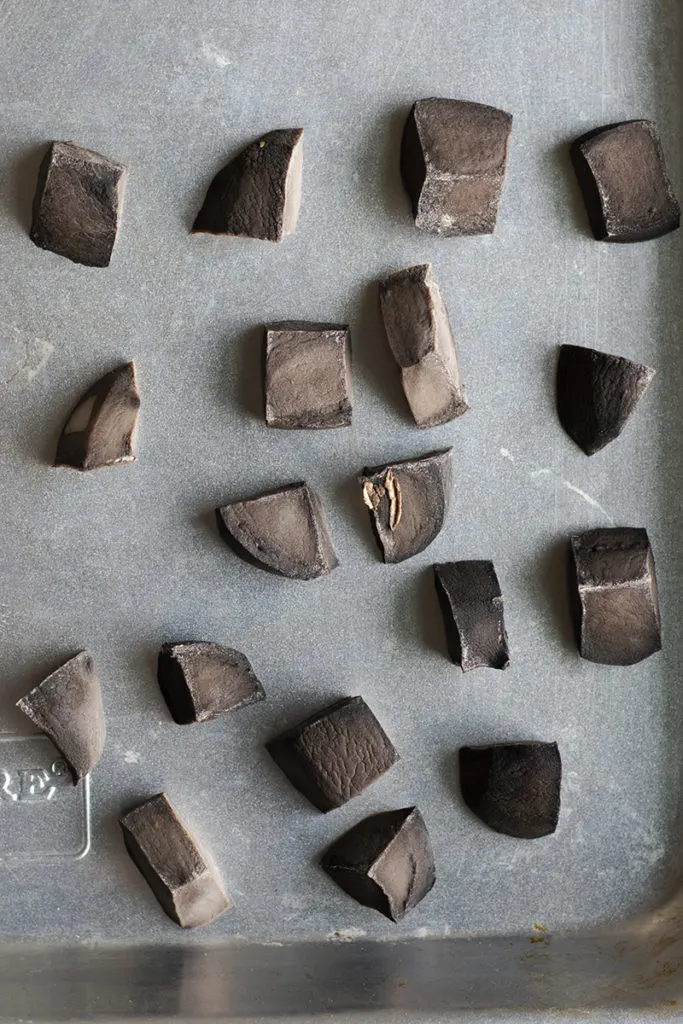
When we cook or can vegetables, the heat destroys enzymes that are responsible for spoilage.
Blanching potatoes for a few minutes, baking, or frying them for a bit is enough to do the job.
After that, you can freeze them until your heart’s content.
Let’s take a closer look at how to freeze potatoes, so we can get those delicious spuds chilling in no time.
Two Tools Will Make This Job Easier
I prefer to use my Santoku knife when I’m working with potatoes. The small divots in the blade keep the starchy potatoes from suctioning themselves to the side of my knife. A Victorinox santoku won’t set you back a lot of money and is a darn good knife. Don’t let that inexpensive price tag fool you.
For a good airtight seal, you might consider investing in a food vacuum-sealing system. These handy machines easily earn their keep in any kitchen where preserving food long-term is a priority. And if you’re cheap (like me) and concerned about the environment, you can reuse the bags.
Let’s talk about french fries and hashbrowns for a moment.
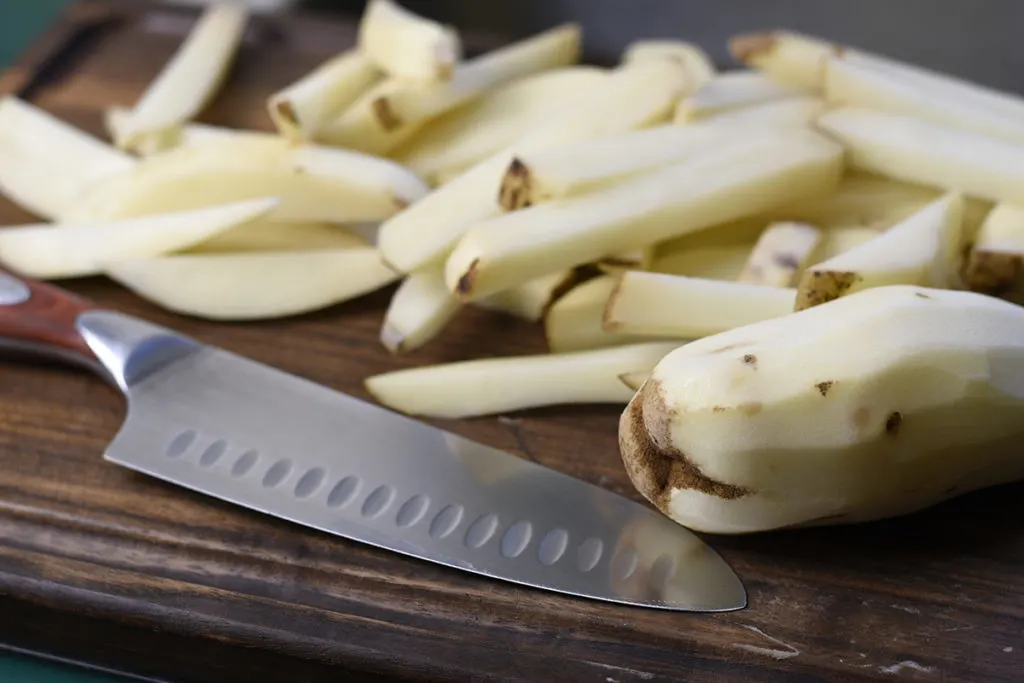
The frozen fries and shredded potatoes you get in the grocery store’s frozen food section are flash-frozen. So, if you freeze potatoes to make these items at home, the final texture will be a bit softer. Not bad, just different. Always cook your fries and shredded potatoes frozen, don’t thaw them first.
For crispy, baked french fries, use an oil mister to lightly coat the frozen fries just before baking them. Many recipes for baked fries call for you to toss them with oil. This always leads to soggy fries.
Freezing Cooked Potatoes
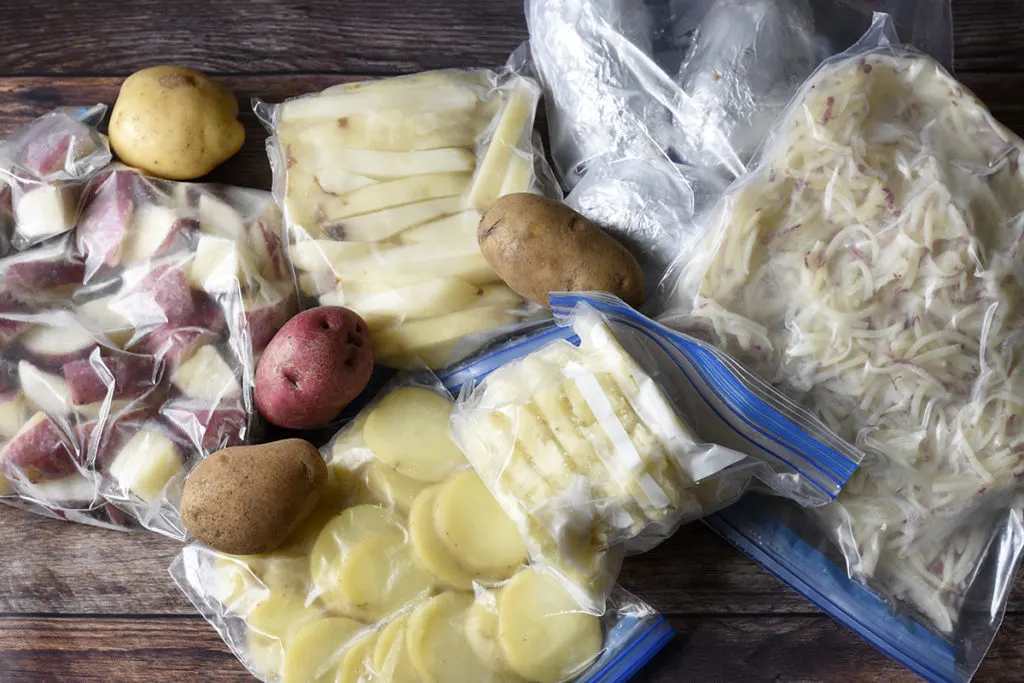
The process is basically the same: stop the enzymatic reaction with heat, cool, freeze, and package no matter what shape you choose to freeze your potatoes.
Blanching Potatoes Before Freezing
Blanching potatoes to freeze is the most common method to prepare potatoes for the freezer. You can blanch potatoes whole, cubed, sliced, cut into fries, shredded for hashbrowns – whatever you please. Leave the skins on or peel them first; it’s entirely up to you.
- Bring a large pot of salted water to a roiling boil.
- Add in the potatoes and time for the recommended number of minutes below.
- Once blanched, pour the potatoes into a colander to drain off the hot water. Then immediately submerse the blanched potatoes in a bath of ice-water in the sink to stop the cooking process. Adding a ½ cup of white vinegar to this ice bath will keep your potatoes from getting mushy in the freezer.

- Drain the potatoes well, and if needed, pat dry with a clean kitchen towel to remove excess water.
- Place the potatoes on a baking sheet lined with wax paper or parchment. Be sure they aren’t touching; otherwise, they’ll clump together.

- I’ve seen some folks say to spray a baking sheet with non-stick cooking spray before placing the potatoes on it. No way, at the end of the day, that’s just one more dish to wash. Wax paper or parchment is the way to go in my lazy kitchen.
- If you’re doing large batches of potatoes, you can layer them by placing a piece of wax or parchment paper between each layer.
- Pop the baking sheet into the freezer and let the potatoes freeze solid, anywhere from 2-6 hours, depending on the potatoes’ thickness.
- Once you’ve got a baking sheet full of potato-rocks, transfer them to a zippered freezer bag. Remove as much air as possible. I usually close the bag except for an inch or two and then suck the air out before sealing the bag the rest of the way. I am my own vacuum-sealer.
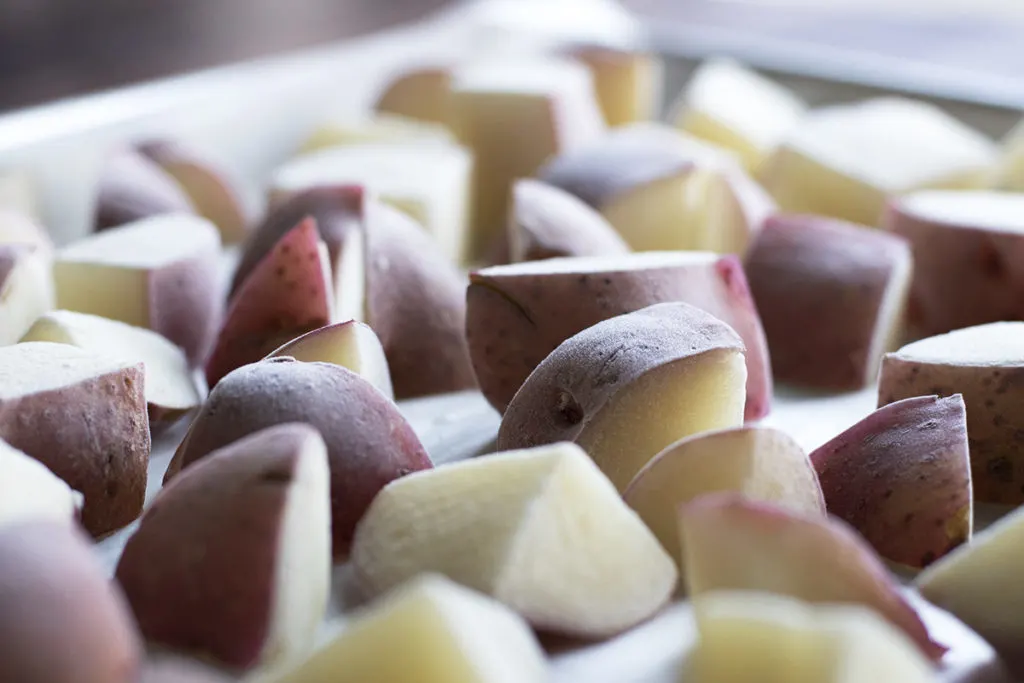
- Label your bag and toss it in the freezer.
See? Easy.
Here’s the recommended timing for blanching, depending on how you prepare the potatoes.
Whole Potatoes
New potatoes freeze better whole than older, stored potatoes.
For potatoes that are 1 ½” round and smaller, blanch them for 5 minutes. For larger potatoes, blanch them for 10 minutes. The idea is to get the heat to the center of the potato. Remember, we need to stop that enzymatic reaction with heat. If you don’t heat the potatoes all the way through, they will turn black in the center.
Cubed
This is a great way to have potatoes on hand for potato salad. Cut the potatoes into 1″ cubes and blanch for 5 minutes.
Sliced
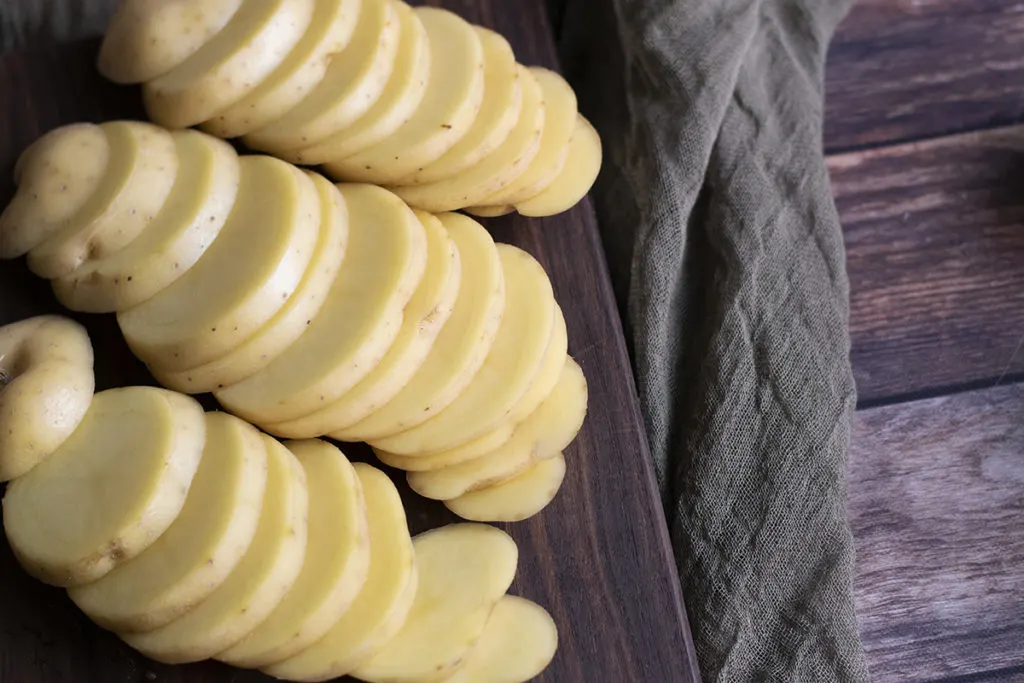
If you love scalloped potatoes, this is a great way to prepare frozen potatoes. Slice the potatoes to ¼” thick. Blanch for 3-5 minutes.
French Fries
Blanch for 3-5 minutes or until tender. Russets work the best for french fries. They should be roughly 3/8″ wide. When I make homemade french fries, either baked or fried, I like to leave a bit of the skin on at both ends of the potato. They feel fancier to me, more like something you’d find at a restaurant.
Shredded
Shred the desired amount of potatoes with a food processor or grater. Blanch only until tender. This can take as little as two minutes. Don’t leave shredded potatoes unattended when you’re blanching them. Pull out a few pieces on a fork and check them to see that they have heated all the way through. You don’t want to overcook them, or they will become gloppy.
When you submerse shredded potatoes in the ice water bath, leave them in the colander. Otherwise, you’ll be trying to fish them out of the ice for the next half hour. Ask me how I know.
Squeeze excess water out of the potatoes in the colander, then spread them out in a thin layer on a clean kitchen towel. Place another towel over the top and gently press as much water out of them as you can.
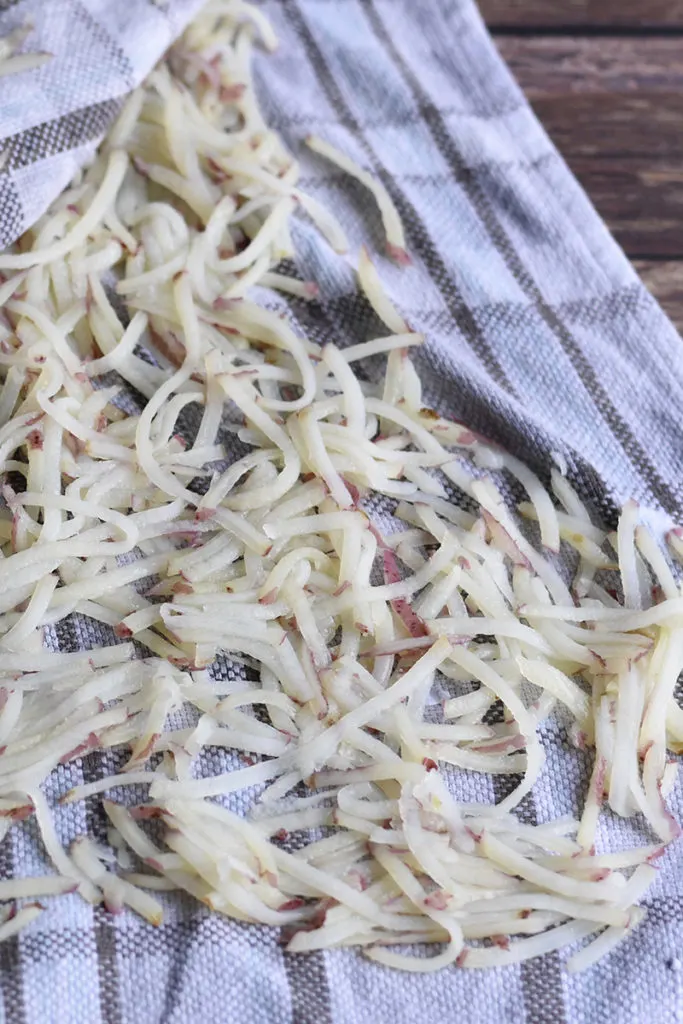
From there, you can place them on the baking sheet in a thin layer or make thin patties and freeze them that way.
Frying Potatoes Before Freezing
Frying is also an acceptable way to stop the enzymatic reaction. You don’t have to fry french fries or hash browns thoroughly, and for a better texture when you’re going to eat them, it’s best not to.
French Fries
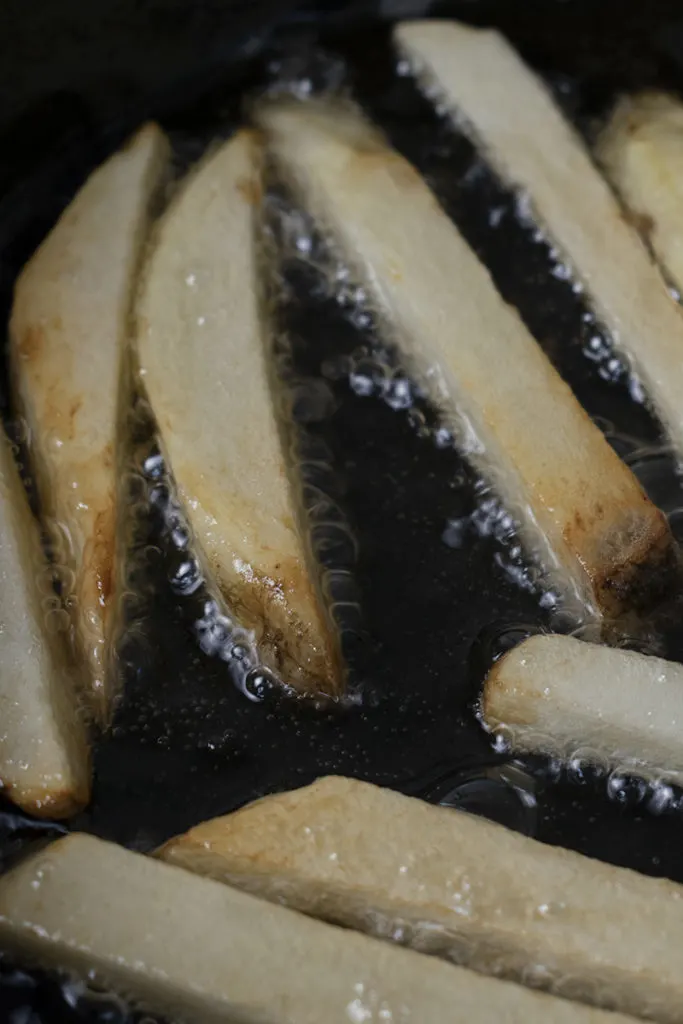
Fry french fries for 3-5 minutes. You want them to be tender and just starting to become gold in color. Cool completely on a paper towel before freezing them on a baking sheet.
Hash Browns
For hash browns, fry until the center is hot. The outside will be somewhat golden. Cool them completely on a paper towel and blot any excess oil before freezing them on a baking sheet.
For both, pop them into a freezer bag once they are frozen, remove the excess air; you know the drill.
Baking Potatoes Before Freezing
Baked Potatoes
Freezing baked potatoes is even easier than frying.
- Scrub your spuds clean and then dry them. Prick each with a fork and toss them into a 350-degree F oven for an hour and a half.
- Once the time is up, pull the potatoes out and pop them in the fridge to cool them down quickly.
- After they are completely cooled, wrap each in aluminum foil and toss them into a gallon freezer bag, removing as much air as possible, and pop the bag in the freezer.
When you’re ready to eat them, place them directly into a preheated oven; no need to thaw them.
Mashed Potatoes
Mashed potatoes are also pretty easy, plus you get to play with your food. Definitely grab the kids to help out with mashed potatoes.
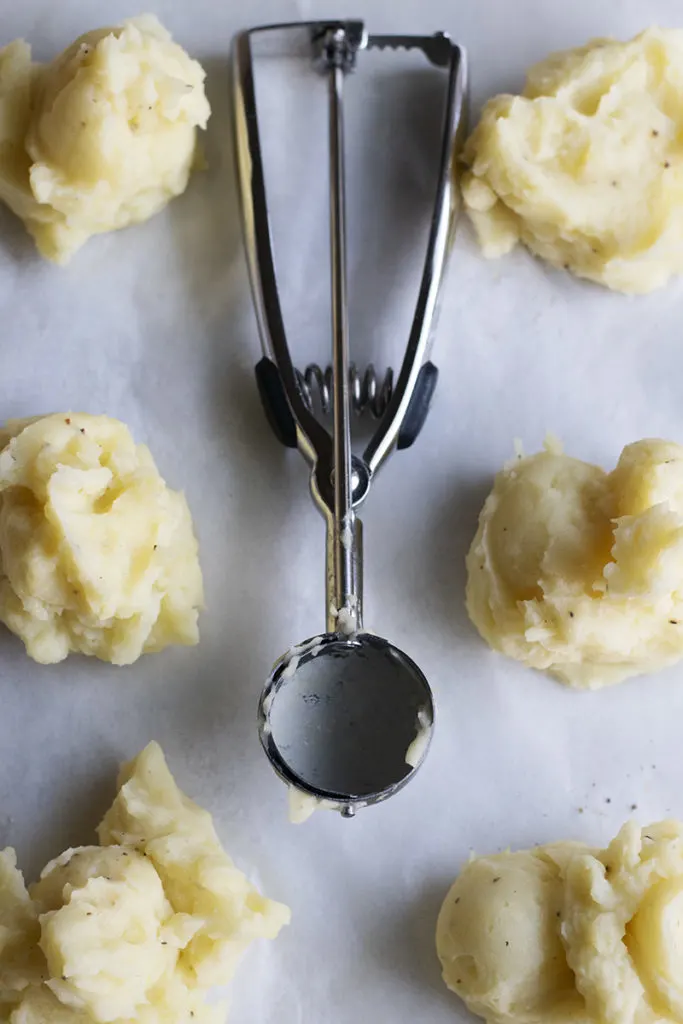
- Simply cook your mashed potatoes as you would usually, then let them cool.
- Once they’re thoroughly cooled, form the mashed potatoes into small patties roughly ½” thick. A cookie dough scooper makes this task less messy.
- Place the scoops so they aren’t touching on a parchment-lined baking sheet, then place another piece of parchment on top of them and smash them down into patties. Pop the baking sheet in the freezer.
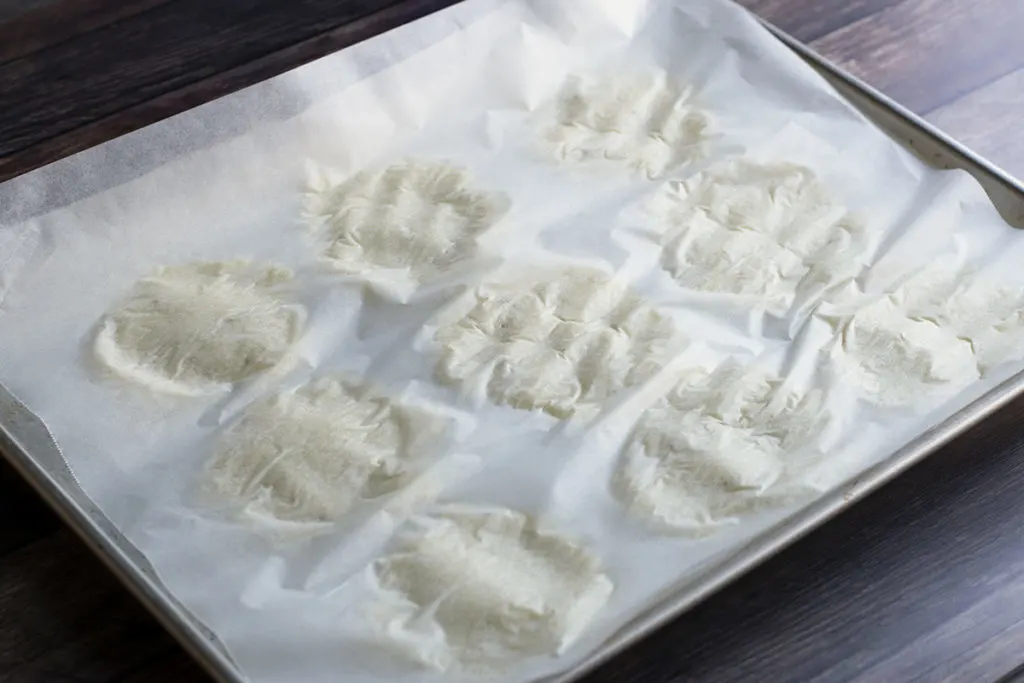
- Once the patties are frozen solid, transfer them to a freezer bag, putting a piece of the parchment paper between each layer, remove the excess air, and pop the bag into the freezer.
This is also a great way to store what’s called “leftover” mashed potatoes. I’ve never heard of “leftover” mashed potatoes, though. Not in this house; I have two preteen boys. Is it a Polish potato dish? German?
Freezing potatoes is a great way to put up potatoes; however, like most fresh ingredients we freeze, the taste and texture will slowly diminish over time. Realistically, frozen potatoes are best eaten within a month.
Freezing is just one of many options for preserving potatoes. As with any food preservation, it’s always best to preserve a single food item in multiple ways. This guarantees a greater variety of serving options, and if one method fails, you have a backup food supply.
For more ways to preserve potatoes, check the fantastic Cheryl’s 5 Way’s to Store Potatoes so They Last for Months.
And if you need more ideas for what to do with potatoes, check out our amazing Elizabeth’s 30 Unusual Uses for Potatoes You’ve Probably Never Considered.

Get the famous Rural Sprout newsletter delivered to your inbox.
Including Sunday musings from our editor, Tracey, as well as “What’s Up Wednesday” our roundup of what’s in season and new article updates and alerts.


